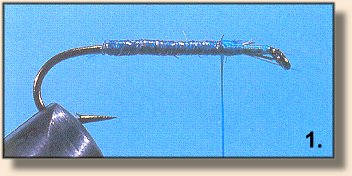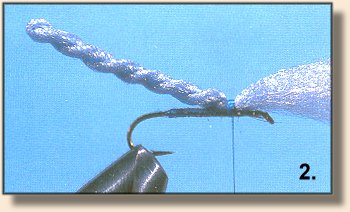
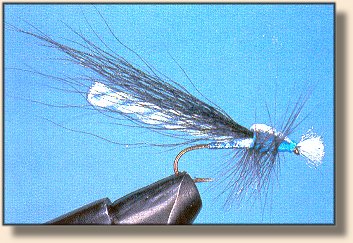 Clark's Damselfly By Lee Clark, St. Helens, Oregon Photos by Joe Warren
|
|
|
1. Cover the hook shank with thread from the front
to the bend. Tie in the blue Mylar strip and cover
about 2/3 of the hook shank. [like tinsel]
|
|
2. Cut one 4" strand of poly yarn and twist. Tie in the
twisted body atop the hook shank extending at least the
full length of the shank past the bend of the hook. Be sure to
leave pleanty of yarn out the front for the wing case and
head.
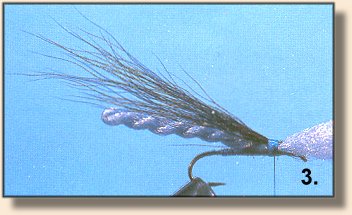 3. Tie in a sparse amount of bucktail over the body but do not exceed its length.
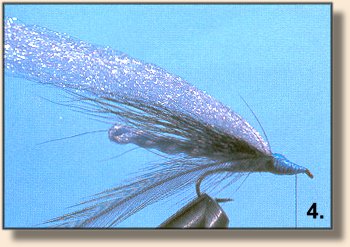
|
|
4. Make a few more thread wraps over the yarn to
within one eye length of the hook eye. Pull the yarn
back over the wing and wrap the thread over the yarn.
Tie in the hackle and continue to wrap the thread to
just short of the hook eye.
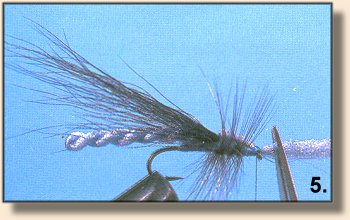 5. Wrap the hackle 3-4 turns and tie off with the thread. Pull the yarn over the middle of the hackle to form the wingcase and tie off with a whip-finish. Trim the yarn about 1/8 inch above hook eye. ~ Lee Clark
Publishers Note:
|
|
Credits: From Fly Tying with Poly Yarn
published by Frank Amato Publications. We greatly appreciate use permission. For more great flies, check out: Beginning Fly Tying, Intermediate Fly Tying and Advanced Fly Tying.
|
